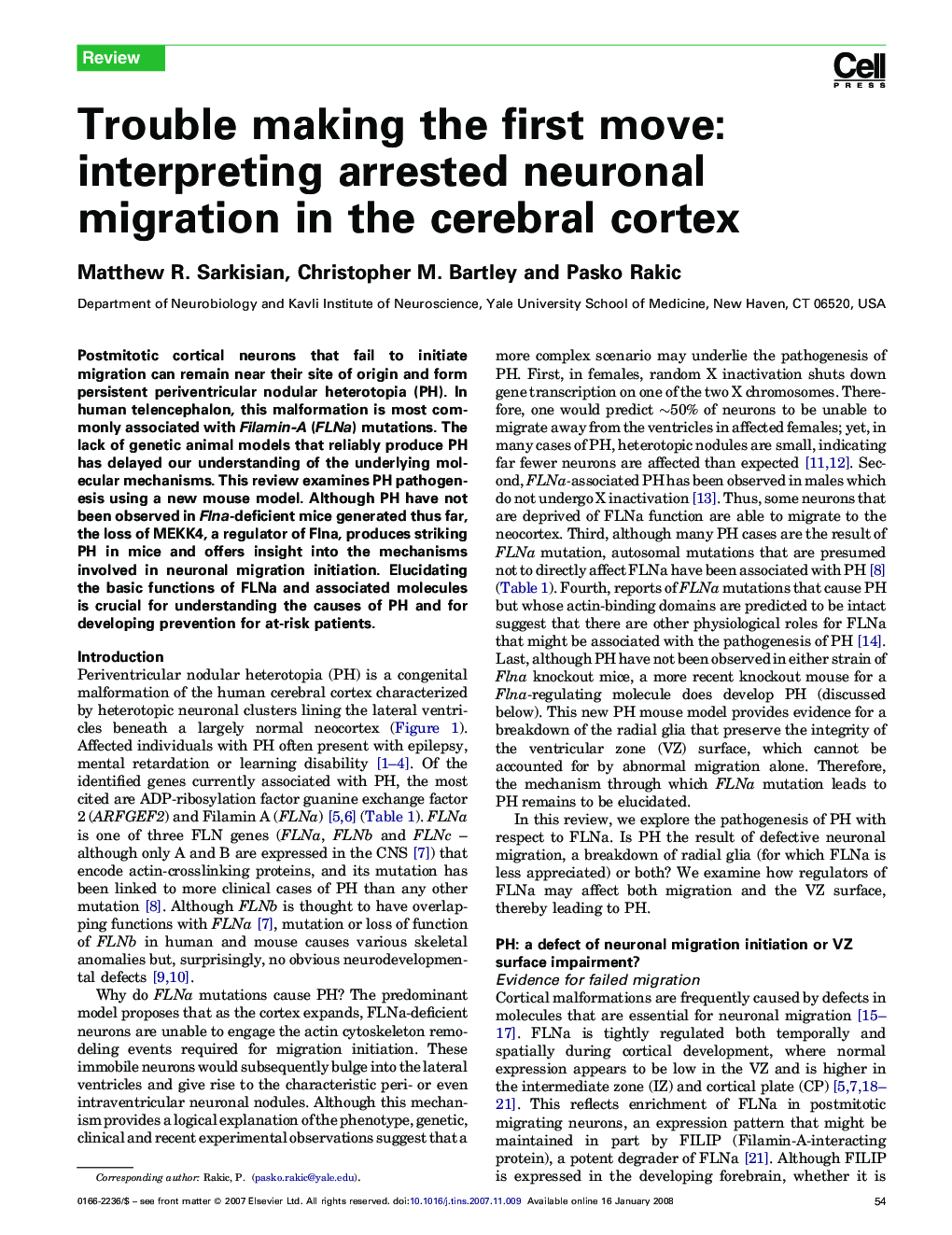| Article ID | Journal | Published Year | Pages | File Type |
|---|---|---|---|---|
| 4354711 | Trends in Neurosciences | 2008 | 8 Pages |
Postmitotic cortical neurons that fail to initiate migration can remain near their site of origin and form persistent periventricular nodular heterotopia (PH). In human telencephalon, this malformation is most commonly associated with Filamin-A (FLNa) mutations. The lack of genetic animal models that reliably produce PH has delayed our understanding of the underlying molecular mechanisms. This review examines PH pathogenesis using a new mouse model. Although PH have not been observed in Flna-deficient mice generated thus far, the loss of MEKK4, a regulator of Flna, produces striking PH in mice and offers insight into the mechanisms involved in neuronal migration initiation. Elucidating the basic functions of FLNa and associated molecules is crucial for understanding the causes of PH and for developing prevention for at-risk patients.
